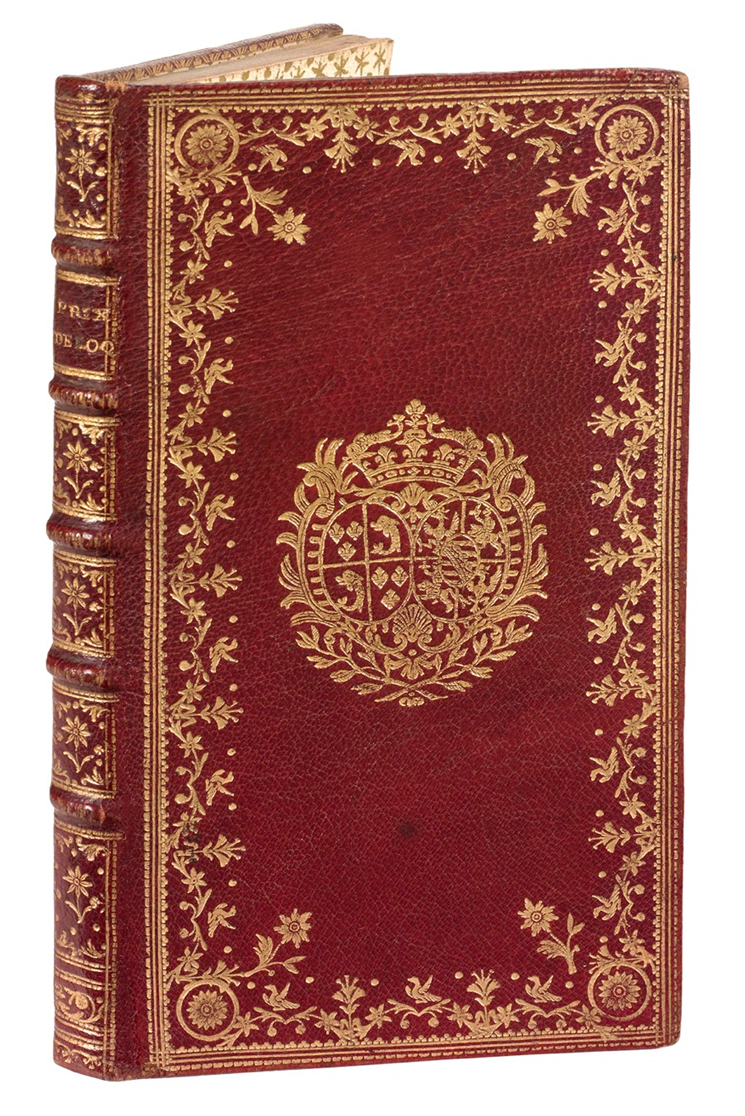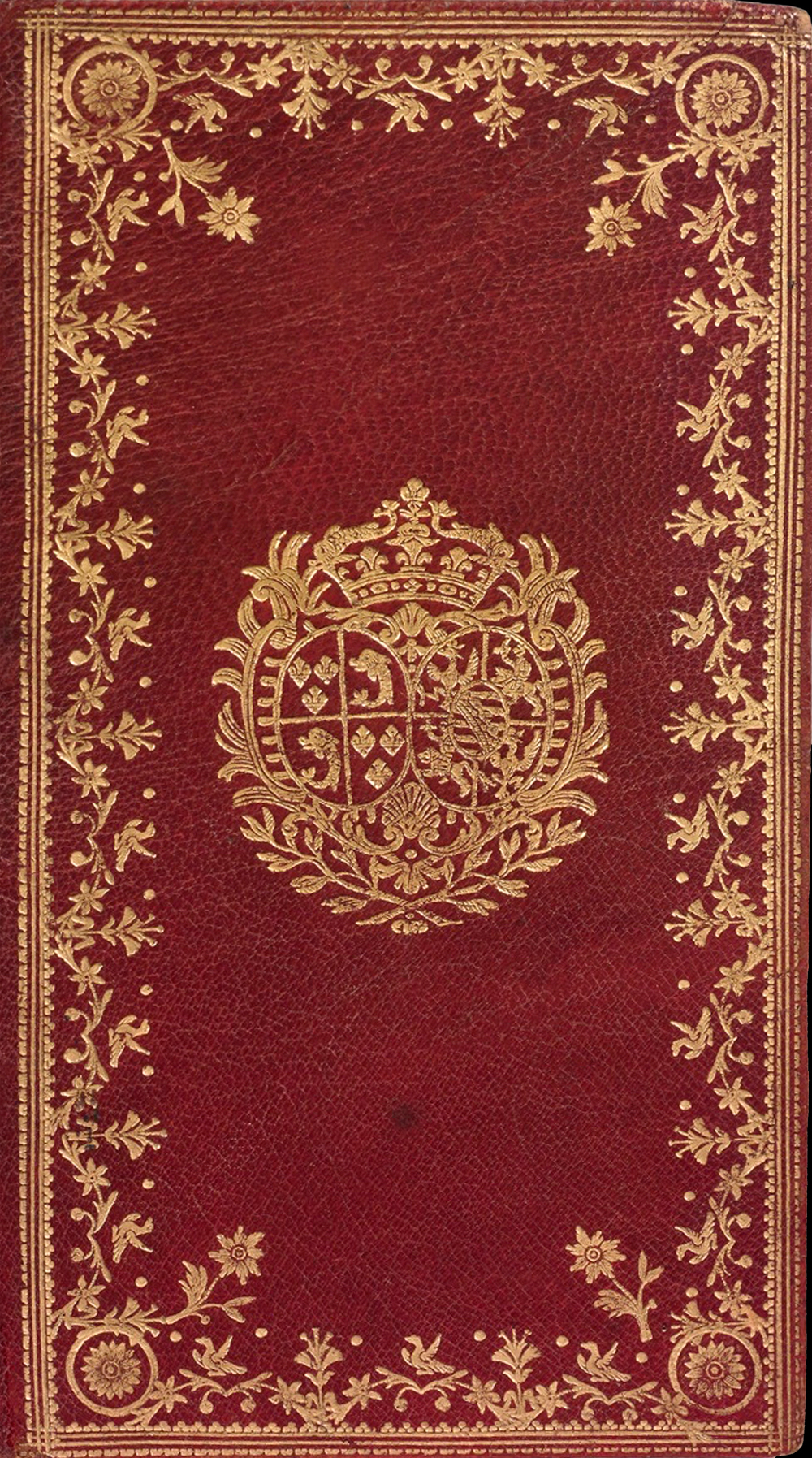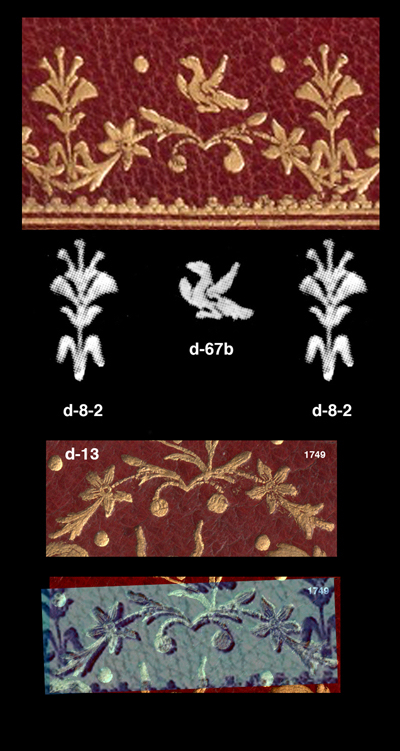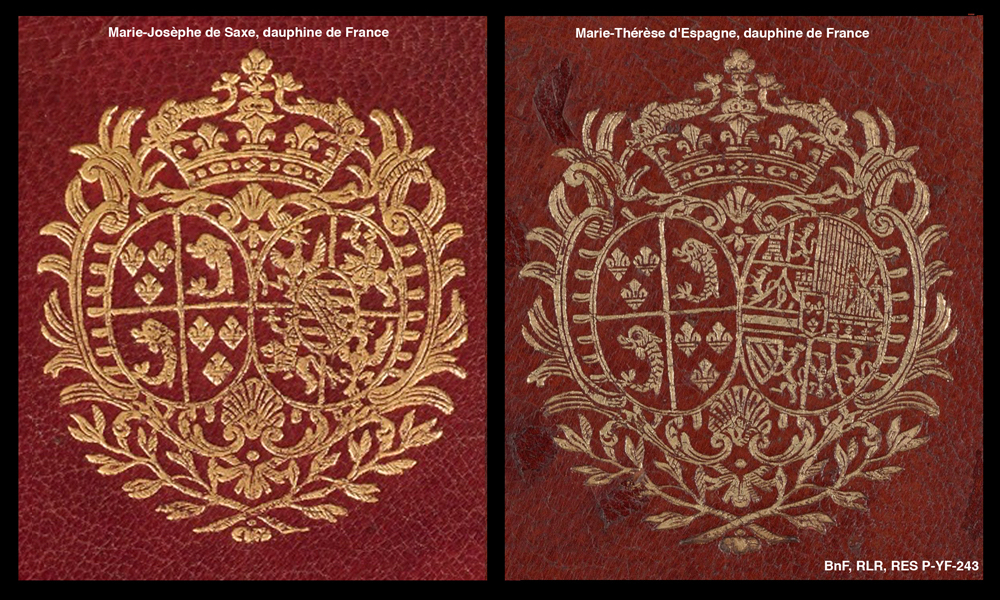


|
SORET (G.-J.). Discours qui a remporté le prix d'éloquence par le jugement de l'Académie françoise, À Paris, Chez Claude Hérissant, 1749, in-12, maroquin rouge, dentelle dorée à l'oiseau et au lis autour des plats, armes au centre, dos à nerfs orné, doublure et gardes de papier à fond étoilé doré, roulette intérieure dorée, tranches dorées (reliure de l'époque). |
|
SORET (G.-J.). Speech that won the prize of eloquence by the judgment of the French Academy ... Paris, Claude Hérissant, 1749. In-12, red morocco, gold tooled Dentelle, with bird and lily around the boards, coat of arms in the center, spine adorned, liners and paper guards with golden starry background, gold tooled inner roulette, gilded edges, (Reliure de l'époque). Original edition. Jean Soret, a lawyer in the parliament of Paris, a member of the Academy of Nancy, won the prize of eloquence awarded in 1748 by the French Academy. The theme was: men do not feel sufficiently how advantageous it would be for them to compete for the good and happiness of one another. Soret saw himself discerning this same price of eloquence for the competitions of the years 1752 and 1758. He composed in 1770 an Ode for the marriage of the Dauphin, future Louis XVI, eldest son of Louis-Ferdinand of France and Marie-Josèphe de Saxe . Armes of Marie-Josèphe de Saxe, dauphine of France, quoted by Quentin Bauchart. Daughter of Augustus III, King of Poland and Prince-Elector of Saxony, Maria Josepha von Sachsen (1731-1767) became dauphine of France in 1747 by her marriage with Louis-Ferdinand, eldest son of Louis XV, barely widowed Infanta Maria Theresa of Spain. The marriage proposed by Marshal Saxe, the winner of Fontenoy, was to serve to renew the alliances between Saxony, Poland and France, after the tensions due to the succession of Austria. The young Dauphine had some difficulty in conquering her husband's heart, inconsolable with the loss of his first wife, and making herself accepted by the court, but she finally succeeded in doing so by a keen sense of diplomacy that impressed people deeply. particular, Marie Leszczynska. She is the mother of the last three Bourbons who ascended the throne of France, Louis XVI, Louis XVIII and Charles X. La reliure est intéressante par son vocabulaire ornemental. Dimensions : 168 x 93 mm. Provenances : Marie-Josèphe de Saxe, dauphine de France ; Potier (Cat., 1870, n° 328) ; vente anonyme [Liliane de Rothschild] (Cat., 9 nov. 2006, n° 200, avec reproduction). Quérard, La France littéraire, VIII, p. 215 ; Quentin Bauchart, II, pp. 91-104 et 102, n° 23 ; Olivier, pl. 2526, fer n° 2. |
| When I first stumbled on this binding in a tiny auction window, I really had my doubts. The corner imprint was unusual, but anyway I searched high and low to get a good sized picture of this item and by a miracle found one (click here to see it) nothing happens by accident. |


| When I finally managed to resize the binding, I was surprised to see that the d-13 imprint overlay, shown at the bottom of Comparative Diagram 1, was a close match, this has to be a Douceur, but where are all the usual 1750 tools? |

|
click here to return to the INDEX of the 1749 Henault pages. click here to see the INDEX of the 2017 pages. click here to return to the HOME page. see below links to previous work |
| Even experts are sometimes wrong, before you spend thousands on a book, please do your own research! Just because I say a certain binding can be attributed to le Maitre isn't any kind of guarantee, don't take my word for it, go a step further and get your own proof. In these pages I have provided you with a way of doing just that. |
| Virtual Bookings, created by L. A. Miller | return to the Home page of VIRTUAL BOOKBINDINGS |